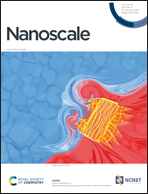Research progress on photocatalytic reduction of CO2 based on ferroelectric materials
Abstract
Transforming CO2 into renewable fuels or valuable carbon compounds could be a practical means to tackle the issues of global warming and energy crisis. Photocatalytic CO2 reduction is more energy-efficient and environmentally friendly, and offers a broader range of potential applications than other CO2 conversion techniques. Ferroelectric materials, which belong to a class of materials with switchable polarization, are attractive candidates as catalysts due to their distinctive and substantial impact on surface physical and chemical characteristics. This review provides a concise overview of the fundamental principles underlying photocatalysis and the mechanism involved in CO2 reduction. Additionally, the composition and properties of ferroelectric materials are introduced. This review expands on the research progress in using ferroelectric materials for photocatalytic reduction of CO2 from three perspectives: directly as a catalyst, by modification, and construction of heterojunctions. Finally, the future potential of ferroelectric materials for photocatalytic CO2 reduction is presented. This review may be a valuable guide for creating reasonable and more effective photocatalysts based on ferroelectric materials.

- This article is part of the themed collection: Recent Review Articles


 Please wait while we load your content...
Please wait while we load your content...